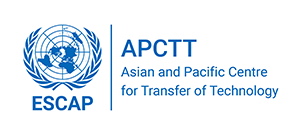Offshore Power Systems
The operating principle of the C-Wave system will have been experienced by anybody who has tried to climb or jump from one boat into another on a wavy sea. As the boats sit next to each other, the gap between them is continually opening and closing requiring a carefully timed jump to get from one to the other. The C-Wave principle uses this a continual movement to drive a generator and produce electricty. The opening and closing of the gap between the boats is a result of the fact that when a wave passes a boat it doesn't go up and down on the wave as we might think, but in fact it goes round in a circle - up and down and side to side. In fact its not just the boat thats going around its the water as well. As the wave passes from right to left the water doesn't move from right to left at the same speed as the wave. It goes round in a circle and passes the energy of the wave to the next chunk of water along which goes round in a circle and so on. This is why waves can transmit large amount of energy long distances very quickly. When two objects are separated in the water by a distance of approximately half a wavelength, they will be separated 180 degrees in their respective circles. While one is moving forward, the other would be moving back. This is why they move towards each other and away when the waves pass. In a wave energy system the practical implementation of this principle is to use two neutrally buoyant walls approximately half a wave length apart, so that while one is moving forward the other is moving back. However, to work efficiently in the real world the C-Wave system must be efficient at collecting the waves energy in a whole range of wave lengths and heights. To do this a third wall at an unequal spacing is added and the device can extract energy from different wave lengths and from a mixed sea, which results from the combination of different wavelengths. For more information, contact: C-Wave Limited SETsquared Southampton Building 27 University of Southampton Highfield SO17 1BJ UK Tel: +44 (0) 23 8059 8565 (or) Tel: +44 (0) 1202 722 991 E-mail: info@cwavepower.com
Sector: Renewable Energy Technologies
Country: India
Area of Application: Tidal / Ocean energy
Keywords: C-Wave system, Wave energy
Advantages: • The efficiency of wave energy to electrical energy conversion. o The C-Wave device takes over 60% of the energy incident on the device out of the wave. • Ability to survives large storm waves. o The C-wave device is a floating device with low mooring loads so rides large storm waves much as a moored ship would. o The load on the device is determined by the energy it takes out the waves, not the energy in the waves, so it can limit the load imposed by large waves. • Size & complexity directly impact on capital and operating costs. o The C-wave device is subject to low loads its structure and its moorings are light and cheap. o The C-Wave device is simple in its concept as there are no parts which are not based on known and proven technology reducing the risks, unit costs and schedule to commercial proof. • The Ability to harvest energy from a range of wave sizes and wave lengths, gives more electricity more of the time. • Access to powerful offshore waves in deepwater (>50m deep). o As a floating device with low mooring loads and the ability to ërideí a storm, the C-wave device is suitable for deepwater. o To benefit from large waves a wave energy device must be larger itself. The structure and generating units on the C-Wave device can be increased in size by an order of magnitude without moving beyond proven components and construction techniques.
Environmental aspects: Energy efficiency
Development Status: Commercial Prototype
Legal Protection:
Technical specifications:
Transfer Terms: Consultancy , Equipment Supply
Target Countries:
Estimated cost (US$):
Upload any relevant document:
Contact Person: APCTT (UNESCAP)
Address: Asian and Pacific Center for Transfer of Technology (APCTT) C-2, Qutab Instituational Area
City: New Delhi
Country: India
Zip/Pin Code: 110016

